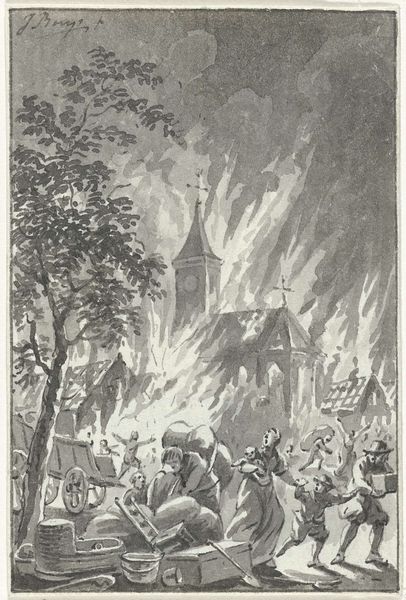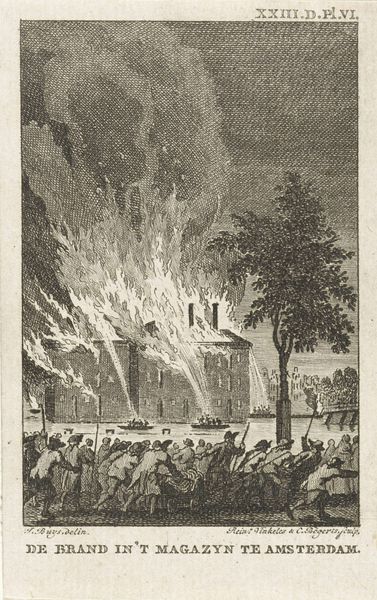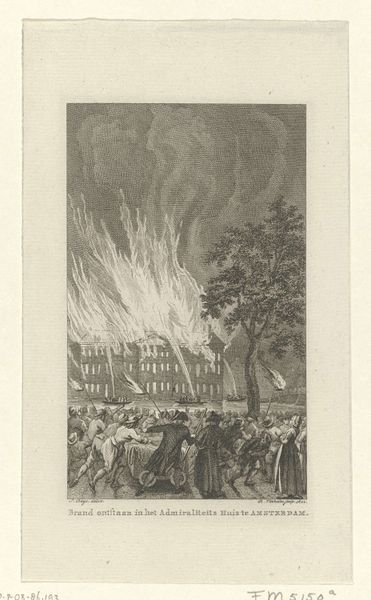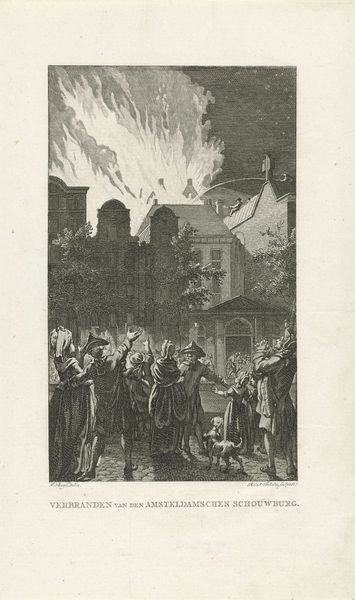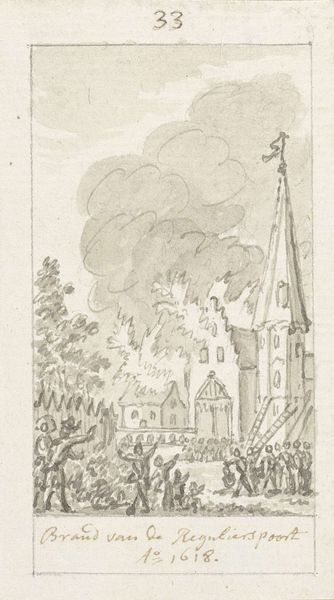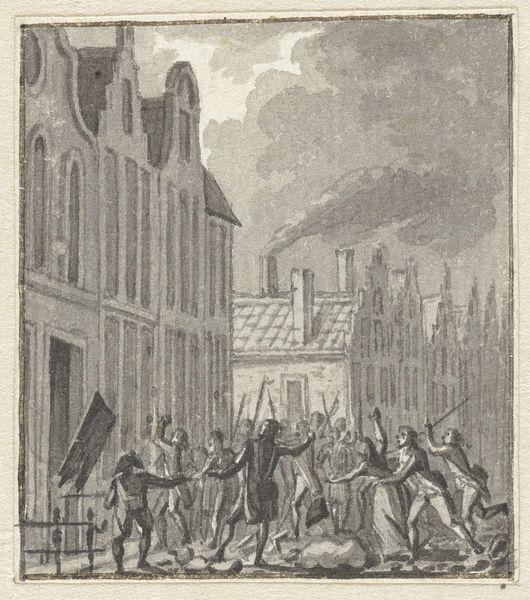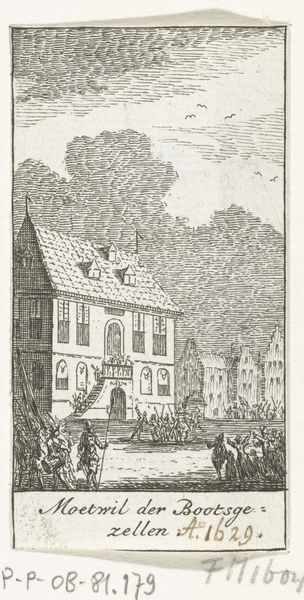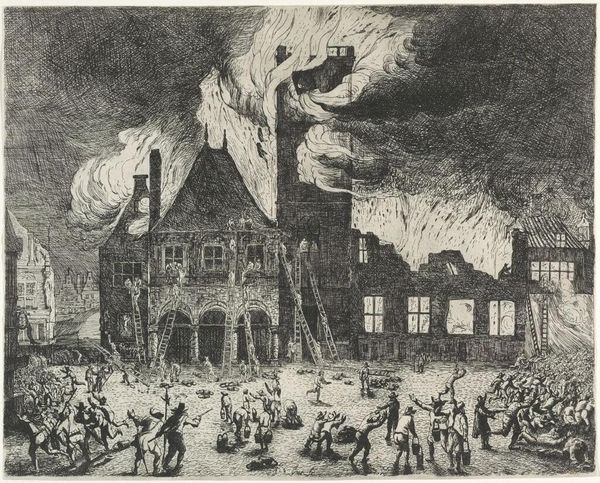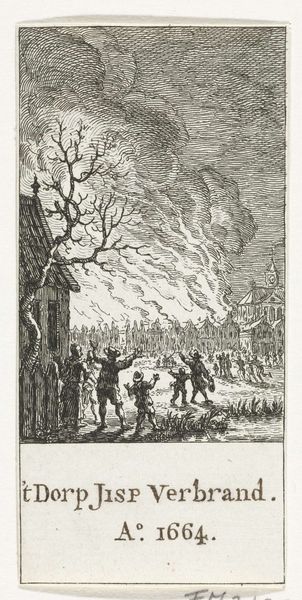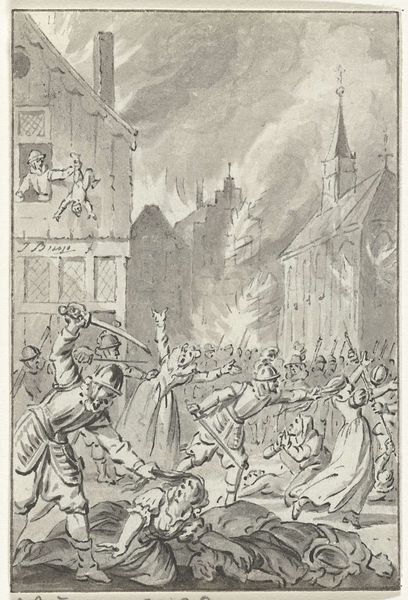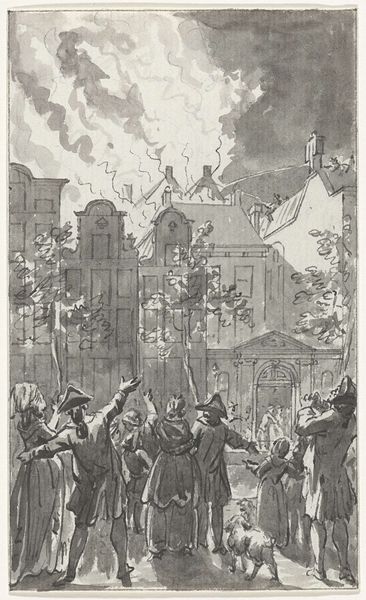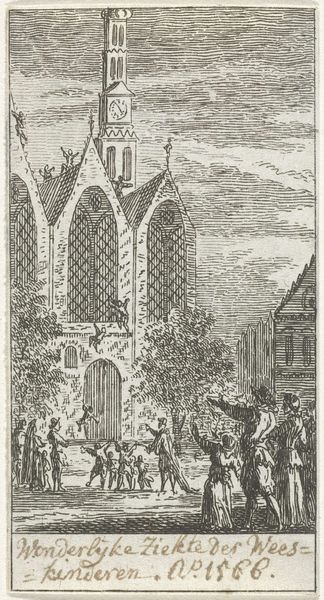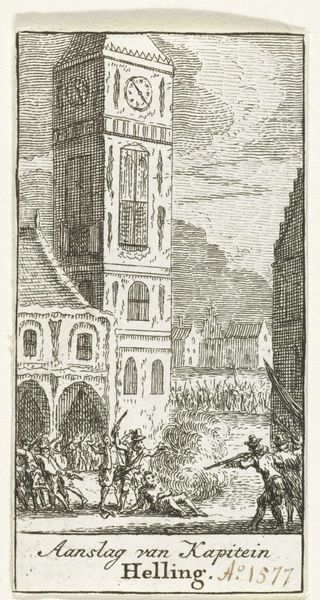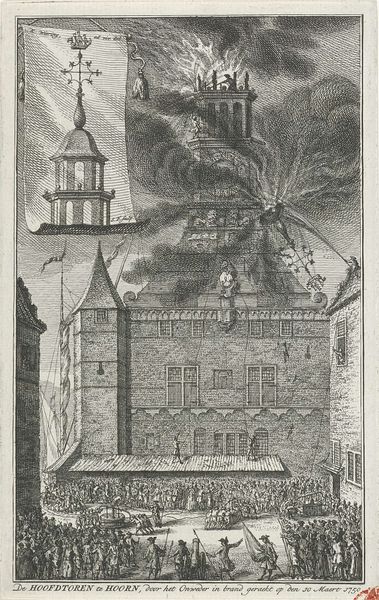
drawing, print, ink, engraving
#
drawing
#
baroque
#
pen drawing
# print
#
ink
#
cityscape
#
engraving
Dimensions: height 80 mm, width 43 mm
Copyright: Rijks Museum: Open Domain
Curator: Simon Fokke, active during the 18th century, created this work. Titled “Brand in de Regulierspoort, 1618-1619,” the artwork at the Rijksmuseum depicts the fire at the Regulierspoort. It’s rendered as a print using engraving, ink, and pen on paper. Editor: The immediate impression is chaos, an urban inferno. The lines are dense and agitated, perfectly conveying the destructive energy of the blaze and the panicked response of the citizens. Curator: Absolutely, the event itself took place much earlier than Fokke's creation of this depiction. The artwork can be understood through the lens of collective memory, and how catastrophic events are remembered and represented across time. How did social relations and urban governance influence the historical event this image recreates? The community's reaction also provides insight into contemporary social cohesion, or perhaps the lack thereof, in the face of disaster. Editor: True, and consider the masterful contrast. Look at how Fokke utilizes the white of the paper against the heavy black ink. The plume of smoke becomes an almost tangible mass, dominating the skyline, and effectively drawing our eye upwards, emphasizing the overwhelming scale of the fire. There's real dynamic tension. Curator: It also is worth questioning what this type of historical visual record may leave out, especially concerning class or race disparities in crisis situations like this one. We must remember that these depictions are mediated by the artists and the powers that be, influencing what the artwork will portray about the historical record. Editor: Of course, there’s a selective vision at play. And formally speaking, the carefully constructed perspective pulls the viewer directly into the heart of the scene, mirroring the public’s panicked confrontation with the disastrous fire. A fascinating visual analysis could involve how light interacts with the figures. Curator: Examining such representations becomes increasingly urgent amidst a globalized present threatened by recurring disasters, from climate crisis events to societal upheavals. How these are documented impacts our understanding of each other and history. Editor: Indeed. Fokke's rendering reminds us that images, beyond historical records, operate as complex compositions where light, shadow, and form collaborate to communicate meaning and provoke a particular aesthetic encounter with tragedy.
Comments
No comments
Be the first to comment and join the conversation on the ultimate creative platform.
